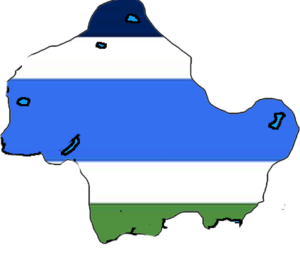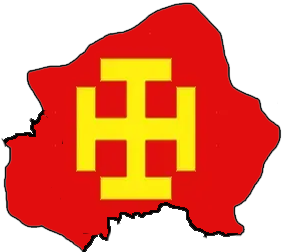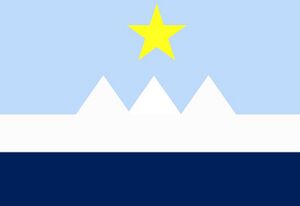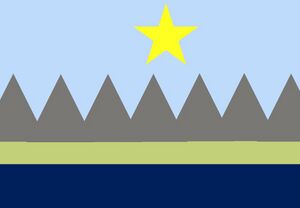Draft:The kingdom of dugg'alia
Kingdom of Dugg'Alia | |
|---|---|
|
Flag | |
| Motto: "If we give the girl nextdoor a tree we can have sex with her" emperor tsinoble abrugar |

dugg'allia is a prosperous nation located in the antartic circle it strectches for 13,870,000 square kilometers, 4 oceans and 3 continents
national motto: "if we give the girl nextdoor a tree we can have sex with her" emperor tsinoble abrugar
history
humble beginings

- kingdom founded by emperor victuzhou abrugar in 1608
- rapid expansion from 1623-1701 by emperess vanizta abrugar
- economic boom from 1701-1765 by emperor vizente abrugar
- golden age from 1765-1840 by emperor redzenintoru abrugar
ruskivian mandate

- ruskivian empire occupies and annexes the dugg'allian empire
- oppression and suppresion insue as the royals flee to kyirusia
- dugg'allian revolution starts in 1907
- dugg'allia declares independence
modern history
- peoples republic of jiafena occupies and annex's the new republic
- revolutionaries flee to the kergulen islands
- monarchs return with the help of revolutionaries secure antartica with there powerful navy
- first instance of dugg'allian-licalidian alliance in 1940
- dugg'allia in exile secures south georgia islands in 1946
- dugg'allia in exile secures tristab de cunha islands in 1954
- dugg'allia in exile secures falkands in 1973
- dugg'allia changes flag in 2003
- end of dugg'allian-licilidian alliance as the patagonian exchange is held with bratagnian empire normalizing relations
- dugg'allia aquires patagonia
- declaration of dugg'allian-bratagnian alliance
administrative regions
antartic administrative region,
this region consists of mostly antartica where barely anyone lives, but it also consists of the kergulen islands where revolutionaries and former monarchs stayed in exile for years

Patagonian adminstrative region
a newly obtained region from bratagnia it boasts the most people in our nation by far and is where many normal citizens fled when the peoples republic of jiafena conquered our homeland

politics
- dugg'allia is a constitutional monarchy there are 400 seats in parliament and 7 parties
- the upper house mainly consists of democrats and socialists while the lower house mostly consists of reactionaries and far rightist
percentages of parties in parliament
socialist faction 43% demokrasya 34%
liberale 10%
kingdom parje 20%
nationalista yultra 3%
population
14 million people inhabit The kingdom of dugg'alia mostly immigrants from old dugg'alia and mapuche population 89% dugg'allian 10% mapuche 0.25% ruskivian 0.25% chinese 0.25% futurelandic 0.25% kyirusian
military
The military of Dugg'allia is composed of the Dugg'alli Army, Air Force and royal Guard. The Navy is the largest branch and is responsible for sea-based operations. The Air Force is responsible for air-based operations. The royal Guard is a reserve force of the Dugg'allian monarchy and is responsible for providing security and protection for Dugg'allian royals and politicians
literature
Dugg'allian literature is a genre of literature originating in the region of guangdong. It is characterized by its focus on themes of honor, royalty, love, and freedom. Common elements of Dugg'allian literature are tales of revolutionaries facing off against ruskivians , tales of revenge and honor, and stories of love and loss. It is often written in an epic style and features symbolism and motifs that are unique to the culture. Examples of Dugg'allian literature include works like The the legend of fluffy, the 10 voyages of serom and the struggle of sally,
artichture
Dugg'allia is a antartic country situated at the antartic circle and it has a estimated population of 10 million people. The country is divided into 2 official administrative regions and its capital city is Kirovgrad. In terms of architecture, the country typically features a blend of both traditional and modern styles, with the Soviet era influencing much of the latter. Traditional architecture in Kyirusia consists of wooden dwellings, which are commonly found in rural areas. Meanwhile, modern architecture often includes a mix of Soviet and Finnish styles, with postmodernist buildings, modern skyscrapers, and glass towers making up much of the skyline in Kyirusia’s larger cities.
foreign relations
a list of foreign relations of our great nations
unilateral recognition
 All United Nations member states[citation needed]
All United Nations member states[citation needed] Sealand
Sealand Molossia[citation needed]
Molossia[citation needed] Vatican City
Vatican City- File:Flag of Kyrirusia.svg Kyrirusia
 Donetsk People's Republic
Donetsk People's Republic Luhansk People's Republic
Luhansk People's Republic Palestine
Palestine Abkhazia
Abkhazia South Ossetia
South Ossetia Nagorno-Karabakh
Nagorno-Karabakh Novorossiya
Novorossiya Transnistria
Transnistria- File:Flag of Melodia.svg Republic of Melodia
 United Futurelandic Empire
United Futurelandic Empire Kosovo
Kosovo Israel
Israel Somaliland
Somaliland Night Slash Empire
Night Slash Empire- File:Flag of the Eagle Empire.svg Eagle Empire
 Liberland
Liberland Great Moldovan Empire
Great Moldovan Empire- Template:Country data Kyirusia
mutual recognition
 Ruskivian Federation
Ruskivian Federation Lorenzoland[citation needed]
Lorenzoland[citation needed] Wenland[citation needed]
Wenland[citation needed] Night Slash Empire[citation needed]
Night Slash Empire[citation needed]- File:Flag of the Eagle Empire.svg Eagle Empire [citation needed]
- File:Flag of Myirskia.svg Federal Republic of Myirskia[citation needed]
 Russia[as in fiction]
Russia[as in fiction] Greater Republic of Westlis[as in fiction]
Greater Republic of Westlis[as in fiction] Council of Orion[citation needed]
Council of Orion[citation needed]
